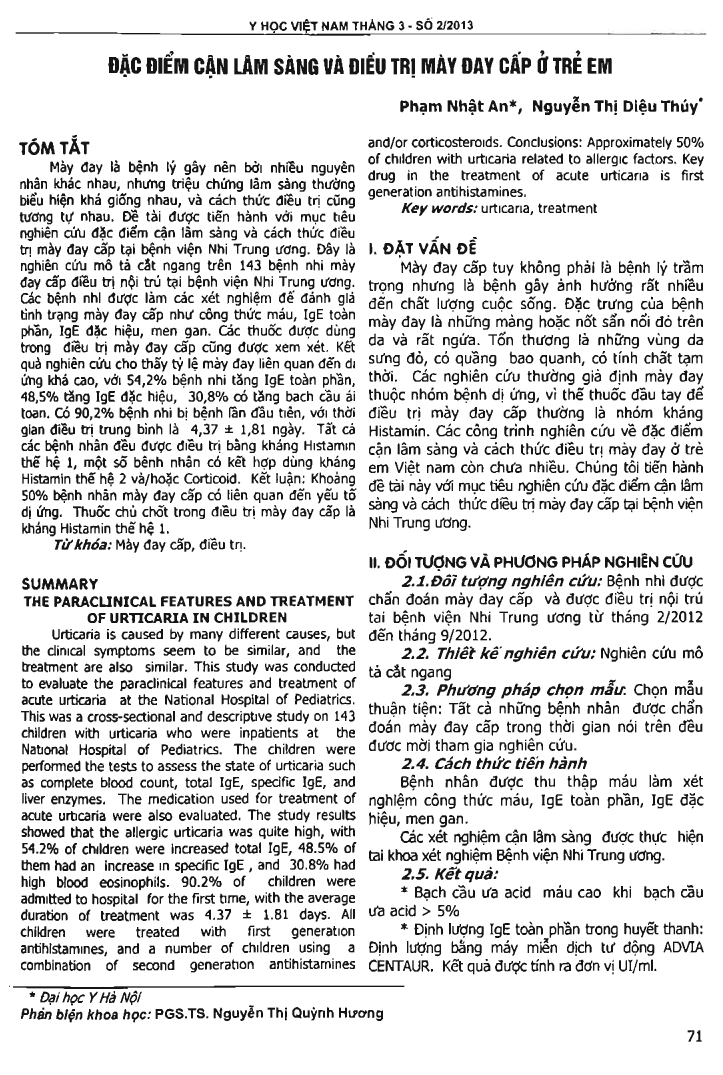
Urticaria is caused by many different causes, but the clinical symptoms seem to be similar, and the treatment are also similar. This study was conducted to evaluate the paraclinical features and treatment of acute urticaria at the National Hospital of Pediatrics. This was a cross-sectional and descriptive study on 143 children with urticaria who were inpatients at the National Hospital of Pediatrics. The children were performed the tests to assess the state of urticaria such as complete blood count, total IgE, specific IgE, and liver enzymes. The medication used for treatment of acute urticaria were also evaluated. The study results showed that the allergic urticaria was quite high, with 54.2 percent of children were increased total IgE, 48.5 percent of them had an increase in specific IgE , and 30.8 percent had high blood eosinophils. 90.2 percent of children were admitted to hospital for the first time, with the average duration of treatment was 4.37 + or - 1.81 days. All children were treated with first generation antihistamines, and a number of children using a combination of second generation antihistamines and/or corticosteroids. Conclusions: Approximately 50 percent of children with urticaria related to allergic factors. Key drug in the treatment of acute urticaria is first generation antihistamines.
- Đăng nhập để gửi ý kiến
